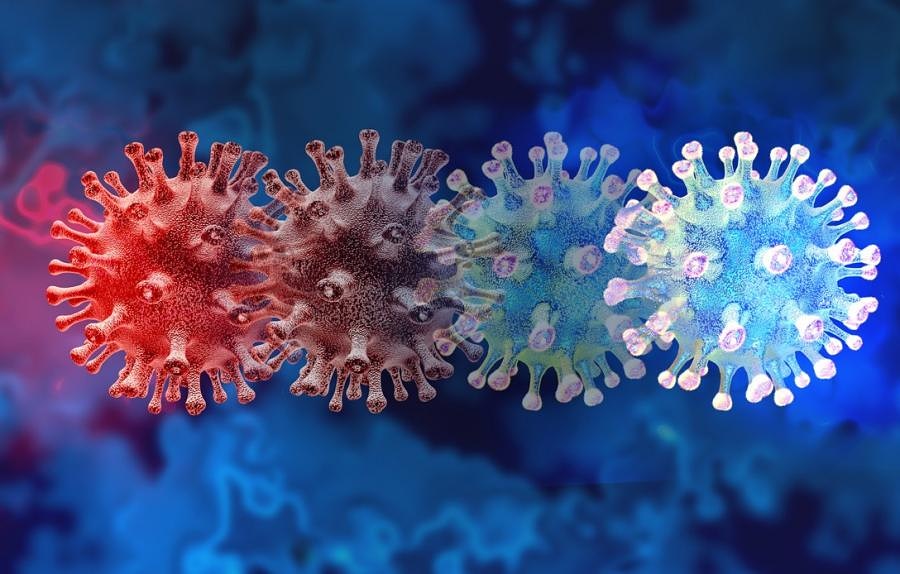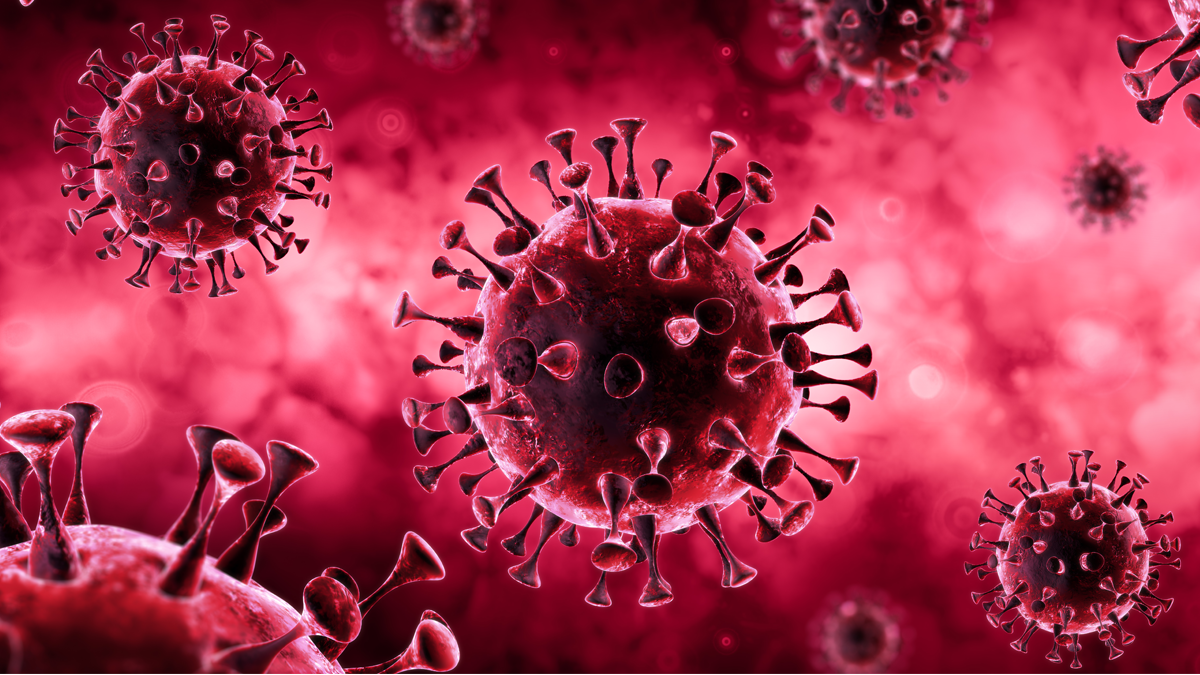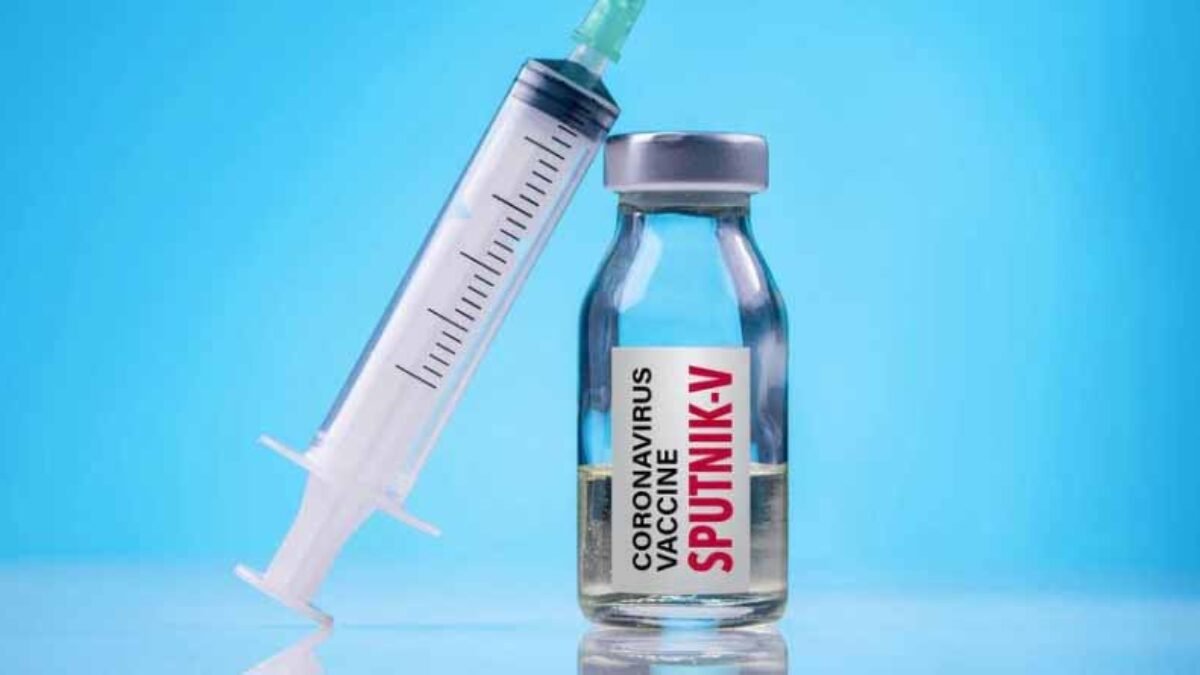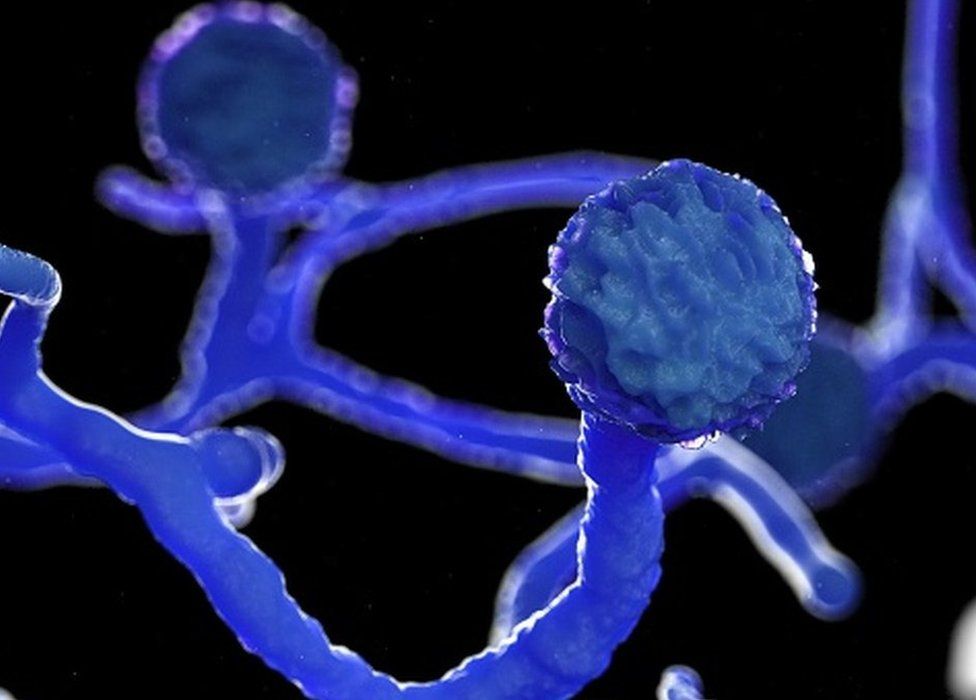covid -19
COVID-19 vaccine: J&J doses may not arrive until November, Zydus Cadila is expected next, and Covaxin expansion is a priority
The government expects the first doses of Johnson & Johnson’s (J&J) single-shot vaccine to arrive in November or December, according to a top government source, after the government granted the foreign vaccine manufacturer Emergency Use Authorization (EUA) last week.
The next vaccine that the government expects to see after Covishield, Covaxin, and Sputnik is Zydus Cadila’s DNA vaccine, which may receive FDA approval soon. “We expect two crore doses per month from Zydus Cadila,” said the source.
The vaccine from Biological E is also expected with an initial lot of seven crore doses in one go as the firm is doing at-risk production after the Centre extended it a Rs 1,500 Cr advance. The firm will soon apply for comparative studies and their data is good,” the source further said. Gennova’s vaccine is also expected in October.
The government source said the priority right now was expanding the capacity of Bharat Biotech with its three plants becoming functional now.
“In August, we will be getting 3 crore doses of Covaxin, which will go up to 4 crore in September and 6-7 crore from October,” the government source said.
He said Bharat Biotech had suffered as the first batch of the manufacturer had failed. Serum Institute of India will supply nearly 15 crore doses of Covishield every month and is keen to start export of the vaccine. The government has told Serum that vaccinating Indians is a priority for now.
The government is meanwhile banking on only 1 crore doses of Sputnik V in all as the local manufacturers are facing a lot of trouble in producing the second dose of the vaccine, whose component is different from the first.
Regarding the approval of Covaxin by WHO, the government source said a last dossier will go to the World Health Organization in a couple of days and WHO could soon call an Expert Committee meeting to give clearance.
Chairman of the Serum Institute, Cyrus Poonawalla, on Taking the Third Covishield Dose
The recommended distance between two doses of Covishield is two months, and another dose should be taken after six months, according to the chairman of the Serum Institute of India (SII), Cyrus Poonawalla.
When asked about a research in the medical journal Lancet suggesting antibodies against coronavirus developed by Covishield, the SII’s vaccine, decline with time, Mr Poonawalla said that while antibodies do drop over time, “memory cells” do not.
“After six months, the antibodies go down and that is why I have taken the third dose. We have given the third dose to our seven to eight thousand SII employees. For those who have completed the second dose, it is my request to take a booster dose (third dose) after six months,” he said.
He was speaking at a press conference after receiving the prestigious Lokmanya Tilak award.
The ideal gap between two doses of Covishield is two months, he said.
“Since there was a shortage of vaccine, the Modi government changed it to three months, but a two-month gap is ideal,” Mr Poonawalla said.
He also said that lockdown was not an effective way to deal with the virus.
“Because if there is no lockdown, the disease will be there in the beginning but later the herd immunity will prevail. Why I prefer herd immunity is because the death rate (due to coronavirus) is very low. Lockdown is a good option when the death rate is high,” he said.
In most cases deaths were caused by negligence and delay in reporting the infection to doctors, he claimed.
EXPLAINED: Why Is The Lambda Variant Causing Concerns Among Covids As The World Struggles To Deal With Delta?
As the United States’ recent issues with the Delta variety reveal, it’s never too early to be concerned about a new avatar of the unique coronavirus, given their capacity to spread more easily and evade immunizations. While the United States is dealing with a rapid influx of new infections, scientists are concerned about the introduction of other strains that could further complicate issues. The Lambda variety, called after the 11th letter of the Greek alphabet, is one option that has been identified so far as being primarily limited to South America. They are aware, however, that it does not take much for a new variation to appear in a new territory.
What Is The Lambda Variant?
Also known as C.37, it was first detected in Peru in December last year. It has since been designated as a Variant of Interest (VoI) by the World Health Organisation (WHO), which label is applied to variants “with genetic changes that are predicted or known to affect virus characteristics such as transmissibility, disease severity, immune escape, diagnostic or therapeutic escape”. Which means these can pack all the worrisome characteristics to deal a hard blow to countries trying to return to normalcy.
Basically, to become a Variant of Concern (VoC), of which there are at present four, a variant has to meet the definition of a VoI but with the proven ability at a global level to cause an “increase in transmissibility or detrimental change in Covid-19″ illness, or an “increase in virulence or change in clinical disease presentation”. It could also just be found to contribute to a “decrease in effectiveness of public health and social measures or available diagnostics, vaccines, therapeutics”.
A study in Chile, which is in the preprint stage, has sparked concerns about Lambda’s ability to spread infectins and also evade vaccine antibodies.
“Our results indicate that mutations present in the spike protein of the Lambda… confer increased infectivity and immune escape from neutralising antibodies elicited by CoronaVac,” says the study led by researchers at the University of Chile in Santiago. CoronaVac is the Chinese vaccine that is being used in Peru, the country seen as being the worst-hit by Lambda.
Why Are Experts Wary About Lambda?
While a pathogen like the novel coronavirus can take on mutations at a dizzying rate, not all of them will be harmful for humans. That is, most mutations may end up conferring no evolutionary advantage to the virus. However, there are cases when the virus undergoes a genetic update that enables it to spread faster, and also fight off medical counter measures like vaccines and therapies.
The Chile study said that “the spike protein of the Lambda variant confers immune escape to neutralising antibodies elicited by the CoronaVac vaccine. Whether the lambda variant also escapes to the cellular response shown to be elicited by CoronaVac is still unknown”.
Experts have reportedly counted seven mutations in the Lambda’s spike protein, which the novel coronavirus uses to attack human cells, which “may make it easier for Lambda to bind to our cells and make it harder for our antibodies to latch onto the virus and neutralise it”.
The Chilean researchers said the “spike protein of the Lambda variant presented increased infectivity when compared with the spike protein of the Alpha and Gamma variants, both of them with reported increased infectivity and transmissibility”. Alpha, the first VoC flagged by WHO, was first detected in England last September and had sparked a surge in cases there. Gamma is the prevalent strain in Brazil and also a WHO-designated VoC.
What Can Be Done To Counter Lambda?
The drill, experts say, is the same with all variants and should be well-known by now. Confronted with the Delta variant, authorities in the US recommended a return to mask wearing, distancing and frequent handwashing — even for those who have been vaccinated — as a strategy to avoid infection.
Further, experts are calling on governments to expedite their vaccine campaigns and urging that people should not refuse to get vaccinated. That is because even though it is suspected that vaccines may beat antibodies, it is not the only protection offered by a shot and most vaccines have been found to at least reduce the severity of the disease.
“It’s important to remember that neutralising antibodies aren’t the only tool in the immune system’s toolkit — they are merely the easiest to study. T cells play a vital role too, so a handful of mutations… might not be enough to allow Lambda to dodge our immune system altogether,” said Gavi, which is working to ensure equitable distribution of vaccines worldwide. Antibodies are found in the blood, but vaccines also protect at the cellular level, too, including by producing memory B and T cells.
Also, the ability of a variant to escape vaccine antibodies is not total, that is, it differs depending on the vaccine. Preliminary studies suggest that while Lambda could be able to blunt antibodies produced by the mRNA Pfizer and Moderna vaccines as well as the Chinese CoronaVac, they still manage to ‘neutralise’ the virus.
Where Has Lambda Spread?
Concern around Lambda has been fuelled mainly by the rise in cases in the South American countries where it is seen as being the dominant variant. Genetic analysis of the novel coronavirus showed that by April 2021 “it accounted for 97 per cent of all sequences in Peru”.
A weekly WHO Covid-19 update on August 10 said that the Americas had “reported an increase of 14 per cent in new cases as compared to the previous week, with just under 1.4 million new cases” while there was a “slight decrease in the number of weekly deaths as compared to the previous week, with nearly 20 000 new deaths reported”. It said that “the increase in weekly cases is mainly driven by Peru”, which recorded a 64 per cent jump, and the US, where cases were up by 35 per cent over the previous week.
Adding to fears is the death rate in Peru, which is the highest in the world at more than 600 for every 100,000 individuals. The country of a little over 33 million people has had more than 2 million confirmed cases with the COvid-19 death toll just shy of 200,000. Gavi said the high death toll can be partly explained by Peru’s “poorly funded, under-prepared healthcare system with too few ICU beds; slow vaccine rollout; limited testing capacity; a large informal economy (few people could afford not to work); and overcrowded housing”.
But Lambda is gradually being reported in more and more countries. A mid-June update by WHO had said that samples of the Lambda variant had been detected in at least 29 countries. As of August 12, outbreak.info said that “the strain has been detected in at least 44 countries and 45 US states” although it so far constitutes only 0.5 per cent of all strains reported worldwide.
Indian health authorities had said in early July that the variant had not been detected in the country.
“As far as we know it has not entered our country, we have not detected this variant in our country. Our surveillance system INSACOG is very effective and it will detect it if it happens to enter our country because when you do sequencing, all this will be picked up,” NITI Aayog member Dr VK Paul had said. Genome sequencing trackers like Gisaid and outbreak.info reported that six samples out of more than 43,000 from India showed a Lambda infection but none in the last four weeks.
According to a study, a new protein-based Covid vaccine mimics virus shape to provide a robust antibody response
Scientists have created a protein-based COVID-19 vaccine candidate that closely resembles the virus’s structure in order to elicit a strong antibody response in animals. Researchers immunised mice with nanoparticles that mimicked SARS-CoV-2, the virus that causes COVID-19, by exhibiting multiple copies of the receptor binding domain (RBD) antigen, according to a report published in the journal ACS Central Science.
Most protein-based vaccines train the immune system to recognise the RBD, a portion of the SARS-CoV-2 spike protein, which the virus uses to enter and infect human cells. The spike protein binds to the ACE-2 receptor on host cell surfaces, that acts as a gateway for the entry of the virus.
However, not all vaccines elicit both antibody and T cell responses, both of which are thought to be important for longer-lasting immunity. The researchers from the University of Chicago, US, had previously developed a vaccine delivery tool called polymersomes — self-assembling, spherical nanoparticles that can encapsulate antigens and adjuvants — and then release them inside immune cells.
Adjuvents are helper molecules that boost the immune response. Polymersomes trigger robust T cell immunity, the researchers said.
The team wondered if they could further improve the antibody response by engineering the nanoparticles to mimic viruses by displaying multiple copies of the RBD on their surfaces. The researchers made polymersomes that were similar in size to SARS-CoV-2 and decorated them with many RBDs.
After characterising the nanoparticles in lab, they injected them into mice, along with separate polymersomes containing an adjuvant, in two doses that were three weeks apart. For comparison, they immunised another group of mice with polymersomes that encapsulated the RBD, along with the nanoparticles containing the adjuvant.
Although both groups of mice produced high levels of RBD-specific antibodies, only the surface-decorated polymersomes generated neutralising antibodies that prevented SARS-CoV-2 infection in cells. Both the surface-decorated and encapsulated RBDs triggered robust T cell responses, the researchers said.
Although the new vaccine still needs to be tested for safety and efficacy in humans, it could have advantages over mRNA vaccines with regard to widespread distribution in resource-limited areas, they said. That is because the surface-decorated polymersomes are stable and active for at least six months with refrigeration, the researchers said.
“Residents are only permitted to walk or jog around the building in a clockwise orientation to avoid any air-borne virus risk from the other way,” one of the rules established by a Residents Welfare Association (RWA) in Bengaluru following the first lockdown last year.
While this might border on the funny to the bizarre, the fact that the pandemic and its impact were a completely new beast to all of us, the many RWAs and apartment complexes of the city included, and that we might have collectively grown wiser and wiser and smarter in dealing with the pandemic over the two waves is a hopeful guess. Now that we know that the waves will keep coming, at least for a reasonable period of time, are there inputs and learnings that we can derive, to help us deal with and beyond the pandemic on an ongoing basis?
Estimates suggest that there are more than 20,000 apartments in Bengaluru which houses at least 20-30 per cent of the city’s population. Most of these apartments have RWAs that oversee and manage the operational functioning of the apartment complexes.
These RWAs have tried to address the various responsibilities and challenges the multiple waves of the pandemic threw at them while managing their resident communities. Many of them have actually played a phenomenal role. They execute a tough and tough and a thankless job. A few of the RWAs have also been accused of implementing draconian rules and guidelines during and after the lockdowns, leading to clashes between residents and committees, often bringing to question the scope and authority of an RWA.
While there are many debates and court cases which are going on to determine the legal shape and structure that an RWA can exercise, it is an undeniable fact of the growing city landscape that RWAs can play a crucial role in a meaningfully meaningfully organised, participative urban governance process.
Risk management
Most of the RWAs across the city have actively collaborated with the Bruhath Bengaluru Mahanagara Palike (BBMP) and health department authorities in various aspects of of pandemic containment and risk management, be it in testing and tracing, isolation and case management, quarantine watch, setup of micro-care-centers etc.
They are hence well prepared to deal with the expectations on such front for future waves too too. Apartments took the lead in organising on-site vaccination camps, which have ensured that a good majority of eligible residents have completed either both or at least one dose of vaccination.
They would need to continue to display the same level of initiative in the next few weeks, when a big majority of residents in the 18-45 year category will be due for their second dose, to ensure that all of them complete the same in time as well.
Proactive engagement
Historically, RWAs have not been the most active in engaging with governance and have had a poor track record even on fundamental aspects like voting – the relationship with the government and civic authorities had always been somewhat transactional.
The pandemic has forced a situation where RWAs and Government bodies had to court each other for various mutual needs. This is a great opportunity for both of them to extend this courtship to a meaningful and long-term engagement mechanism on various facets of urban governance.
RWAs offer the government an organised mechanism to engage with the citizenry and better understand their expectations, while drawing upon their network and reach to execute public impact initiatives and measures more effectively and with active participation.
It is hence incumbent upon members of these RWAs and apartment complexes to enhance their own internal models of participative governance by having more resident participation and engagement as a means towards proactive engagement with the government.
Building bridges
The long and arduous battle with the pandemic has dented our psychological well-being and human relationships have been affected in various ways RWAs and apartment communities are a reflection of that impact. We have seen deaths of our own or neighbours or staff.
The homes have now become digital workplaces and schools as well, and there are territorial battles within 2 or 3 BHK homes. The erstwhile community events, celebrations, walkers-groups, sports-gangs etc., that played a crucial role in the social and cultural integration of the community have been missing.
J&J Doses Expected to Arrive in India in November-December, Zydus Cadila Next
After the Centre gave the foreign Covid-19 vaccine producer Emergency Use Authorization (EUA) last week, India is set to receive the first doses of Johnson & Johnson’s single-shot vaccine in November or December this year, according to a top government source.
After Covishield, Covaxin, and Sputnik, the government expects Zydus Cadila’s DNA vaccine, which may receive FDA approval soon, to be the next coronavirus vaccine to come. Zydus Cadila is expected to deliver two crore dosages per month, according to the source.
The vaccine from Biological E is also expected with an initial lot of seven crore doses in one go as the firm is doing at-risk production after the Centre extended it a Rs 1,500 crore advance. “The firm will soon apply for comparative studies and their data is good,” the source further said. Gennova’s vaccine is also expected in October.
The government source said that the priority right now was expanding the capacity of Bharat Biotech with its three plants becoming functional now. “In August, we will be getting three crore doses of Covaxin, which will go up to four crore in September and 6-7 crore from October,” the government source said, adding that Hyderabad-based firm Bharat Biotech had suffered as first batch of the manufacturer had failed.
Pune-based Serum Institute of India (SII) will supply nearly 15 crore doses of Covishield every month and is keen to start export of the vaccine. The government has told the SII that vaccinating Indians is a priority for now.
Meanwhile, the government is banking on only one crore doses of Russia’s Sputnik V vaccine in all as the local manufacturers are facing a trouble in producing the second dose of the vaccine, whose component is different from the first.
Regarding the approval of Covaxin by the World Health Organisation, the government source said a last dossier will go to the WHO in a couple of days and the WHO could soon call an expert committee meeting to give clearance.
According to Russia’s health minister, Mikhail Murashko, the Sputnik V vaccine against Covid is only about 83 percent effective against the Delta variant, which is lower than previously thought. In June, the vaccine’s creators claimed that Sputnik V was 90% effective against the variant. ”The latest results show that effectiveness is around 83 percent,” Murashko said, according to the Tass news agency.
GGH duty doctor is accused of stealing 22 lakh rupees from a black fungus patient
The patient’s husband is planning to file a police report, and a departmental investigation is underway.
In the guise of providing ‘Lyophilized Amphotericin B,’ a duty doctor at the Government General Hospital in Vijayawada allegedly duped a black fungus patient’s husband out of Rs 22 lakh.
Pottem Vijayalakshmi of Kadapa was admitted to GGH on May 29 and treated for black fungus until June 17, when her condition deteriorated and she moved out. On July 7, she passed away. The incident was recently brought to light after the patient’s husband, Pottem Raghukulesa Saran, a retired government junior lecturer, filed a complaint with the GGH superintendent regarding all bank deposit transactions to the doctor’s account.
Mr. Raghukulesa alleged that during the treatment in GGH a total of ₹22.8 lakh was paid to duty doctor Thota Vani Supriya who promised them of supply of the anti-fungal injection at ₹70,000 to ₹1 lakh each which was allegedly not available in the hospital. The patient’s son P. Anil also sent money via online transfer to the doctor, they allege.
Speaking to The Hindu, Mr. Raghukulesa said that they would soon lodge a police complaint against the duty doctor. “We are still bereaving her (wife) death and certain formalities and rituals are being done. I will complain to the police in Vijayawada in a day or two. I was told by officials that the duty doctor was suspended,” he said.
Mr. Raghukulesa said that instead of accepting her wrongdoing the duty doctor levelled allegations against our bereaved family. “We received legal notices from the duty doctor two weeks ago with false allegations. Police inquiry would reveal all the facts. We have all the proofs of conversation with the doctor,” he said. Mr. Raghukulesa’s son
Meanwhile, Health Department and district officials are conducting an inquiry into the issue. Dr. Vani was not available for comment.
Despite a drop in Covid cases, patients are returning to hospitals with requests for elective surgeries
11August, New Delhi: As coronavirus cases decline in the national capital, hospitals in the Delhi-NCR are seeing patients return for elective surgeries, with some claiming that the current situation is nearly identical to the pre-Covid era.
However, medical facilities reported that patients made special requests, such as fewer hospital visits and single-room stays, because they are still afraid of contracting Covid.
Dr Gurinder Bedi, director and HOD, orthopedic and joint replacement, Fortis Hospital in Vasant Kunj, said the hospital OPDs are back to normal and in some cases, even better placed than how they were in the pre-Covid era.
The senior doctor said the hospital has seen an increase in joint replacement surgeries, spine surgeries for chronic low backache.
“There is a colossal change in the last six to eight weeks. There is also a fear of the third wave and people are more pragmatic thinking that there is a window and they should get issues sorted out,” he said.
Dr Sumeet Shah, director – Minimal Access and Bariatric Surgery – PSRI Hospital, concurred with Bedi and said that there was definitely a dip in the number of elective surgeries during the second wave of Covid but since the number of coronavirus cases have come down significantly the elective surgery numbers are now almost close to the pre-Covid levels.
“There are multiple reasons for it, people sense that there is a gap in the Covid cases and this provides them the right opportunity to get operated on,” he said.
Since many patients had already delayed their surgeries, they had reached the point where the surgery could not be delayed further, he said.
“Like we have seen cases of patients suffering from piles where patients reached to us when their condition became severe with their haemoglobin was as low as five. Consequently, we had to admit them just to restore their hemoglobin level and post that we operated on them,” Dr Shah said.
“There can be a significant risk in such cases. Similarly, we have patients with gallbladder stone, hernia who delayed their surgeries and reached the stage where it became an emergency kind of situation,” he added.
Dr Kousar A Shah, COO, Aakash Healthcare in Dwarka, said since mid-May, the hospital has seen a 50 to 70 per cent increase in elective surgeries.
“The increase has been across all the departments, but some departments like orthopaedics have seen more elective surgeries. Although the number of elective surgeries never went to zero, we are seeing more than 50 per cent to 70 per cent rise now,” he added.
Dr Nitin Arora, senior consultant, general surgery, Paras Healthcare in Gurgaon, said there has been a 200 per cent increase in elective surgeries.
“There is an interesting shift in the demands of patients. Earlier, they would say that we should not discharge them early or before they have fully recovered but now they want a minimum stay in hospital and ask whether the surgery can be done early in the day and they can be discharged before night. We are allowing patients to stay at the hospital for less time,” he said.
Bedi said patients usually want the number of hospital visits to be kept low.
“A large number of patients are opting for single rooms despite the cost being higher. They also inquire whether the physiotherapy after the surgery can be done at home or the dressing change can happen at their home,” he added.







